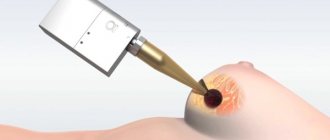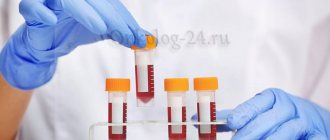What it is?
When protein molecules break down in the human body, creatinine is formed. Under the influence of the enzyme creatine kinase, this substance is converted into creatine phosphate. The biochemical reaction is accompanied by the release of a large amount of energy, which is necessary for muscle function.
The body produces several types of creatine kinase. They are found in the cells of different muscle groups. Creatine kinase MB is one such enzyme. This substance accumulates in the myocardium and affects the functioning of the heart.
Normally, CM CK is located inside cells. Therefore, the content of this enzyme in the blood of a healthy person is very low. If the cells of the heart muscle are damaged, then there is a sharp release of CK MV into the bloodstream. Most often this is observed with myocardial infarction.
Creatine kinase (Creatine phosphokinase, CPK, Creatine kinaze)
Creatine kinase is an enzyme that catalyzes the transfer of a phosphoryl residue from ATP to creatine to form creatine phosphate and ADP. ATP (adenosine triphosphate) is a molecule that is a source of energy in the biochemical reactions of the human body.
The reaction, catalyzed by creatine kinase, provides energy for muscle contraction. There are creatine kinase contained in the mitochondria and cytoplasm of cells.
The creatine kinase molecule consists of two parts, which can be represented by one of two subunits: M, from the English muscle, and B, brain. Thus, in the human body creatine kinase exists in the form of three isomers: MM, MB, BB. The MM isomer is found in skeletal muscles and myocardium, MV - mainly in the myocardium, BB - in brain tissue, and in small quantities in any cells of the body.
In the blood of a healthy person, creatine kinase is present in small quantities, mainly in the form of the MM isomer. Creatine kinase activity varies with age, gender, race, muscle mass, and physical activity.
Creatine kinase enters the bloodstream in large quantities when the cells containing it are damaged. At the same time, based on the increase in the activity of certain isomers, one can conclude which tissue is affected: MM fraction – muscle damage and, to a lesser extent, heart damage, MV fraction – myocardial damage, BB fraction – cancer. Typically, tests are done for total creatine kinase and its MB fractions.
Thus, an increase in creatine kinase in the blood allows us to draw a conclusion about a tumor process, damage to the heart or muscles, which in turn can develop both as a result of primary damage to these organs (during ischemia, inflammation, trauma, degenerative processes), and as a result of their damage in other cases. conditions (due to poisoning, metabolic disorders, intoxications).
Heart diseases in which cells are destroyed are myocardial infarction, myocarditis, myocardial dystrophy, and toxic myocardial damage. Analysis for creatine kinase is of greatest importance for diagnosing myocardial infarction, since the activity of this enzyme increases earlier than others, already 2-4 hours after a heart attack, and reaches a maximum after 1-2 days, then normalizes. The earlier treatment for a heart attack is started, the better for the patient, which is why timely and accurate diagnosis is so important.
Muscle diseases in which cells are destroyed are myositis, myodystrophy, injuries, especially when compressed, bedsores, tumors, intense muscle work, including what occurs during convulsions. In addition, there was an inverse relationship between the levels of thyroid hormones and creatine kinase: with a decrease in T3 and T4, the activity of creatine kinase increases and vice versa.
Interestingly, the creatine kinase assay was first used to detect myopathy, but is currently used mainly to diagnose myocardial infarction.
What is the research used for:
- To confirm the diagnosis of “myocardial infarction”, “myocarditis”, “myocardial dystrophy”.
- To confirm the diagnosis of “polymyositis”, “dermatomyositis”, “myodystrophy”.
- To check for thyroid disease.
- To verify the presence of a tumor process and assess its severity.
- To assess the severity of polymyositis, dermatomyositis, myodystrophy, myopathy.
- To identify carriage of the Duchenne myopathy gene.
- For diagnosis and assessment of the severity of damage to the heart and muscular system during intoxication due to infection, as well as in case of poisoning (carbon monoxide, snake venom, drugs).
When a study is ordered:
- For symptoms of coronary heart disease.
- With symptoms of myocardial infarction, in particular with a blurred clinical picture, especially with a recurrent infarction, atypical localization, pain or ECG signs, difficulty in differential diagnosis with other forms of coronary heart disease.
- For hypothyroidism.
- For symptoms of myositis, myodystrophy, myopathy.
- When planning pregnancy by a woman whose family had Duchenne myopathy patients.
- For diseases that can lead to damage to the heart or muscular system.
What can influence the result:
- It is necessary to provide your doctor with accurate information about the medications you are taking, as well as about any chronic diseases you have.
- Surgery and, in some cases, intravenous injections increase creatine kinase activity.
Important Notes:
- An increase in total creatine kinase activity is not a direct indication of any disease, so it should be interpreted by a specialist taking into account the clinical picture and the results of additional examination.
What does the analysis show?
How to find out the level of MB creatine kinase? You need to take a blood test for this enzyme. It is carried out as part of a biochemical study. In the laboratory, the total concentration of all three types of creatine kinase is most often determined, and then the content of the MB fraction is separately calculated. This study allows you to diagnose myocardial infarction at an early stage.
During a heart attack, necrosis of cardiac muscle tissue occurs. The enzyme KK MB leaves dead myocardial cells and enters the blood. Already 3 hours after the onset of heart pain, the analysis detects an increased level of this substance. The CV CV indicator becomes maximum 16 to 36 hours after the first signs of a heart attack appear. The amount of enzyme exceeds the permissible limit many times.
The more creatine kinase MB is elevated, the more extensive the damage to the heart muscle. A very high level of the enzyme indicates an extremely serious condition of the patient.
During a heart attack
In most cases, determination of CF CK is carried out when myocardial infarction is suspected. The blood test for the enzyme is repeated several times:
- The first test is done when the patient enters the hospital.
- Then the analysis is repeated 3 more times. Blood is drawn every 3 hours after the first sample is taken.
The study helps track the dynamics of the development of a heart attack. The analysis allows you to differentiate a heart attack from angina pectoris. If heart pain is not associated with myocardial damage, then the level of the CK MB enzyme remains within normal limits.
At the same time, the patient is given an ECG. Such a comprehensive examination allows you to confirm or refute the presence of necrosis of the heart muscle.

The diagnosis of myocardial infarction is never made based on the results of only one test. It is necessary to monitor the level of creatine kinase MB over time. Damage to the heart muscle is indicated by an increase in the content of this substance in the blood.
In the post-infarction period, the study is repeated. This is necessary to monitor the patient's condition. Blood sampling is carried out 3 - 4 days after the attack. If the treatment was effective, the enzyme level returns to normal. If the patient still has elevated creatine kinase MB, this indicates a recurrence of the infarction.
Other indications
Myocardial infarction is not the only indication for testing for CF CK. This enzyme can also be elevated in other heart diseases, as well as in intoxication and injury. The study is prescribed if the patient experiences the following symptoms:
- frequent pain in the heart area;
- arrhythmia;
- dyspnea;
- bluish skin;
- swelling of the legs.

This clinical picture may be a sign of serious cardiac pathologies. The analysis is also prescribed for chest bruises, severe alcohol and carbon monoxide poisoning, to identify possible myocardial damage.
In children, creatine kinase MB may be elevated due to cardiac complications after infections. Therefore, a child who has had viral pathologies needs to undergo a blood test for this enzyme.
Reasons for increased creatine kinase activity
An increase in creatine kinase activity is observed primarily in diseases associated with skeletal muscles, such as myositis (inflammation), muscle dystrophy, myotonia, as well as in case of muscle injury, after heavy physical exertion, as well as with the use of drugs and substances that damage skeletal muscles (eg, statins, fibrates, antipsychotics, heroin, amphetamine, alcohol and carbon monoxide poisoning).
Determination of the activity of creatine kinase and, in particular, its isoform CK-MB, is important for the diagnosis of myocardial diseases such as myocardial infarction and myocarditis. However, the diagnostic value of this study in diagnosing heart diseases is reduced by the fact that increased creatine kinase activity also occurs in many other diseases not related to myocardial tissue, which can cause diagnostic errors.
In this regard, after the introduction of more sensitive indicators of myocardial necrosis, such as troponin, the importance of creatine kinase in the diagnosis of myocardial infarction has decreased significantly.
Preparation
If a myocardial infarction is suspected, the analysis is done urgently after the patient is admitted to the hospital. In this case, there is no time left to prepare for the study.
If the test is carried out as planned, then it is better to carefully prepare for the analysis. This will reduce the likelihood of distortion of sample results.
The test is taken in the morning on an empty stomach. Venous blood is taken for examination. The rules for preparing for the test are as follows:
- It is necessary to stop drinking alcohol and fatty foods the day before the test.
- Avoid physical stress on the eve of the test.
- Do not smoke 2 hours before blood collection.
The analysis is not carried out during a course of physical procedures, or if the patient underwent an ultrasound or radiographic examination the day before. The test for the CK MB enzyme is quite sensitive and can give distorted results if the preparation rules are not followed.

Creatine phosphokinase CPK-MB

Creatine kinase MB is an intracellular enzyme that is a specific and sensitive indicator of myocardial damage.
Research method
Linked immunosorbent assay.
Units
U/L (unit per liter).
What biomaterial can be used for research?
Venous blood.
How to properly prepare for research?
- Do not eat for 12 hours before the test.
- Avoid physical and emotional stress 30 minutes before the test.
- Do not smoke for 30 minutes before donating blood.
General information about the study
Creatine kinase MB (CK-MB) is an isoform of the enzyme creatine kinase involved in cellular energy metabolism.
While the CK-MM and CK-BB isoforms predominate in muscle and nervous tissue, creatine kinase MB is almost exclusively found in cardiac muscle. In the blood of a healthy person it is present in very small quantities. Therefore, an increase in creatine kinase MB activity is a highly specific and sensitive indicator of myocardial damage.
Myocardial damage can occur due to a variety of factors, such as trauma, dehydration, infectious disease, exposure to heat and cold, and chemicals. However, its main cause is atherosclerosis of the coronary vessels and coronary heart disease (CHD).
There is a direct relationship between the activity of creatine kinase MB and the extent of the infarction, so this indicator can be used in making the prognosis of the disease.
Ischemic myocardial injury that does not lead to infarction (eg, stable angina) generally does not increase creatine kinase MB activity.
Some substances have a direct toxic effect on the myocardium: alcohol intake promotes a 160-fold increase in the activity of creatine kinase MB, acute and chronic carbon monoxide poisoning CO – a 1000-fold increase.
Little activity (less than 1%) of creatine kinase MB is observed in muscle tissue. Therefore, during extremely high physical exertion (for example, marathon running) or with extensive trauma to skeletal muscles, the activity of creatine kinase MB may increase slightly without causing damage to the myocardium.
When is the study scheduled?
- For symptoms of acute coronary syndrome: intense chest pain lasting more than 30 minutes, not eliminated by nitroglycerin, weakness, sweating, shortness of breath with minimal physical activity.
- With symptoms of acute coronary syndrome without characteristic changes in the electrocardiogram.
- For symptoms of acute (and chronic) myocarditis: indistinct chest pain, increased fatigue, a feeling of interruptions in the functioning of the heart.
- When monitoring myocardial function in the early post-infarction period.
- When assessing the degree of myocardial damage and when making a prognosis of the disease, including exposure to large and prolonged exposure to small doses of ethanol and carbon monoxide.
What do the results mean?
Reference values: 0 - 25 U/l.
Reasons for increased activity of creatine kinase MB:
- acute myocardial infarction,
- acute and chronic myocarditis,
- blunt chest trauma,
- significant physical activity,
- injury with muscle damage,
- rhabdomyolysis,
- Duchenne muscular dystrophy,
- systemic connective tissue diseases (dermatomyositis, systemic lupus erythematosus),
- Reye's syndrome
- hypothyroidism,
- renal failure,
- carbon monoxide poisoning,
- congestive heart failure, cardiomyopathies,
- use of doxycycline.
A decrease in creatine kinase MB activity is not diagnostically significant.
What can influence the result?
- Previous myocardial pathology, heart failure.
- Taking drugs that lower the glomerular filtration rate: furosemide, gentamicin, levodopa, methylprednisolone.
- A false negative result can be obtained when the test is performed in the first 4-8 hours after the onset of symptoms of the disease.
Reasons for the increase
A low level of creatine kinase MB in the blood does not indicate any pathology. This substance may even be completely absent from the bloodstream. A zero enzyme reading is considered normal.
In what diseases is creatine kinase MB elevated? The following pathologies may be the cause of an increase in the concentration of the enzyme in the blood:
- Myocardial infarction. As already mentioned, with this disease, the enzyme is released into the blood from damaged cells. In the first hours after the onset of an attack, the study may give false negative results. Therefore, the test for QC CF is carried out several times.
- Reye's syndrome. The pathology occurs in children 4–12 years of age while taking antipyretic drugs containing salicylic acid (for example, Aspirin). The syndrome is accompanied by encephalopathy and liver failure. In a biochemical blood test, the child's creatine kinase MB and liver enzymes were elevated. Children require urgent hospitalization in the intensive care unit.
- Intoxication. In case of severe ethanol and carbon monoxide poisoning, the patient may experience myocardial damage. At the same time, the level of the enzyme KK MB exceeds the norm hundreds of times.
- Injuries. Chest contusions can damage the heart muscle. This is accompanied by an increase in the concentration of MC MC. The higher the enzyme level, the more severe the myocardial damage.
- Myocarditis. Inflammation of the heart muscle is observed after infections in adults and children. Most often it occurs as a complication of sore throat, influenza, diphtheria, and herpes. The level of the CK MB enzyme is increased, but not as much as in myocardial infarction

Creatine kinase-MB (Creatine phosphokinase-MB, CPK-MB, Creatine Kinase-MB, CK-MB)
Creatine phosphokinase-MB is an isoform of the creatine kinase enzyme involved in cellular energy metabolism.
Creatine phosphokinase consists of two subunits: M (from the English muscle - “muscle”) and B (from the English brain - “brain”). Combinations of these subunits form the creatine phosphokinase isoforms CK-BB, CK-MM and CK-MB. As a result of damage to the cell membrane due to hypoxia or other causes, these intracellular enzymes enter the systemic circulation and their activity increases. While the CK-MM and CK-BB isoforms predominate in muscle and nervous tissue, creatine phosphokinase-MB is almost exclusively found in cardiac muscle. In the blood of a healthy person it is present in very small quantities. Therefore, an increase in creatine phosphokinase-MB activity is a highly specific and sensitive indicator of myocardial damage.
Myocardial damage can occur due to a variety of factors, such as trauma, dehydration, infectious disease, exposure to heat and cold, and chemicals. However, its main cause is atherosclerosis of the coronary vessels and coronary heart disease (CHD).
Coronary heart disease has several forms. The creatine phosphokinase-MB test is most often used in acute myocardial infarction (MI). In the blood of a person experiencing acute myocardial infarction, the activity of creatine phosphokinase-MB can be increased within 4-8 hours after the onset of symptoms of the disease, the peak occurs at 24-48 hours, and the level usually returns to normal by the 3rd day. This allows the use of creatine phosphokinase-MB for diagnosing not only primary MI, but also recurrent infarction (for comparison: troponin I and lactate dehydrogenase LDH are normalized by approximately the 7th day). It should be noted that the rate of change in the activity of creatine phosphokinase-MB depends on many reasons: previous myocardial pathology and the extent of the infarction that has occurred, the presence or absence of heart failure, etc. Therefore, for the most accurate diagnosis, repeated measurements of creatine phosphokinase-MB activity are necessary at intervals of 8-12 hours per day. during the first 2 days from the onset of symptoms of the disease. Creatine phosphokinase-MB activity may remain normal during the first 4-8 hours even after a heart attack has occurred.
There is a direct relationship between the activity of creatine phosphokinase-MB and the extent of the infarction, so this indicator can be used in making the prognosis of the disease. Ischemic myocardial injury that does not lead to infarction (eg, stable angina) generally does not increase creatine phosphokinase-MB activity.
While coronary heart disease usually affects people of mature age and older, myocarditis predominates among young people. It is most often caused by the cardiotropic virus Coxsackievirus (although the cause is usually impossible to determine). A patient with myocarditis experiences indistinct chest pain, increased fatigue, and interruptions in heart function. The nature of these symptoms changes during the day and with physical activity. However, they are rarely very pronounced, and because of this the disease often remains unrecognized. Inflammation in the myocardium over time leads to irreversible changes: dilated cardiomyopathy and congestive heart failure. With extensive myocardial involvement in myocarditis, an increase in creatine phosphokinase-MB is noted. Unlike acute myocardial infarction, in myocarditis the activity of creatine phosphokinase-MB is characterized by a persistent and prolonged increase.
Rare, but especially dangerous, Reye's syndrome, which occurs more often in children of primary preschool age, also occurs with damage to the heart muscle. The development of this disease is facilitated by the use of aspirin and a viral infection, most often herpes zoster (chicken pox in children) or influenza. With this syndrome, liver function is significantly impaired, cerebral edema and acute encephalopathy occur.
Other myocardial diseases, such as heart failure, cardiomyopathies, and rhythm disturbances, in most cases do not lead to a significant increase in the activity of creatine phosphokinase-MB.
Some substances have a direct toxic effect on the myocardium: alcohol intake contributes to a 160-fold increase in the activity of creatine phosphokinase-MB, acute and chronic carbon monoxide poisoning CO – 1000-fold.
Little activity (less than 1%) of creatine phosphokinase-MB is observed in muscle tissue.
Therefore, during extremely high physical exertion (for example, marathon running) or with extensive trauma to skeletal muscles, the activity of creatine phosphokinase MB may increase slightly without causing damage to the myocardium. What is the research used for:
- To diagnose acute myocardial infarction in the first hours after the onset of symptoms.
- For differential diagnosis of diseases occurring with pain in the precordial region.
- To assess the degree of myocardial damage and to make a prognosis of the disease, including exposure to large doses of ethanol, acute and chronic carbon monoxide poisoning.
- For the diagnosis of recurrent infarction.
- To assess the risk of developing myocardial infarction and other coronary disorders in patients during the rehabilitation period after extensive abdominal and other surgical operations.
- To assess complications when prescribing cerivastatin, fluvastatin and pravastatin.
When a study is ordered:
- For symptoms of acute coronary syndrome: intense chest pain lasting more than 30 minutes, not eliminated by nitroglycerin, weakness, sweating, shortness of breath with minimal physical activity.
- With symptoms of acute coronary syndrome without characteristic changes in the electrocardiogram.
- For symptoms of acute (and chronic) myocarditis: indistinct chest pain, increased fatigue, a feeling of interruptions in the functioning of the heart.
- When monitoring myocardial function in the early post-infarction period.
- When assessing the degree of myocardial damage and when making a prognosis of the disease, including exposure to large and prolonged exposure to small doses of ethanol and carbon monoxide.
What can influence the result:
- Previous myocardial pathology, heart failure.
- Taking drugs that lower the glomerular filtration rate: furosemide, gentamicin, levodopa, methylprednisolone.
- A false negative result can be obtained when the test is performed in the first 4-8 hours after the onset of symptoms of the disease.
If the enzyme is elevated
What to do if the analysis reveals an elevated level of creatine kinase MB? Experts do not make an accurate diagnosis with just one blood enzyme test. If heart disease is suspected, doctors prescribe the following additional tests:
- electrocardiogram;
- echocardiogram;
- MRI of the heart;
- blood test for leukocyte formula and rheumatoid factor.
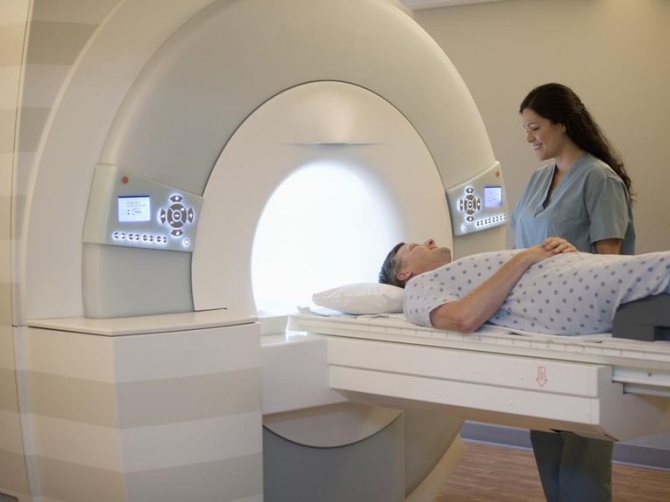
An increase in creatine kinase MB is an alarming signal. After receiving the data from a comprehensive examination, the patient must undergo a course of treatment. You should pay close attention to your lifestyle. You need to completely give up alcohol and smoking, stop eating fatty and excessively high-calorie foods. An increase in the CK MB enzyme in the blood may indicate severe heart disease. And such pathologies are incompatible with bad habits and poor nutrition.
Reviews from specialists and patients
Doctors describe the blood test for the CK MB enzyme as a very informative study. Previously, when a myocardial infarction was suspected, blood was taken from patients for CPK (creatine phosphate kinase). However, such a study showed the total content of all types of creatine kinase. And these substances are found not only in the myocardium, but also in the brain, as well as in the skeletal muscles. A high level of CPK did not always indicate myocardial infarction. According to doctors, only an analysis for a cardiac-specific enzyme (CF fraction) helps to accurately determine the presence of damage to the heart muscle.
In the video below you can see a doctor's opinion about the creatine kinase test.
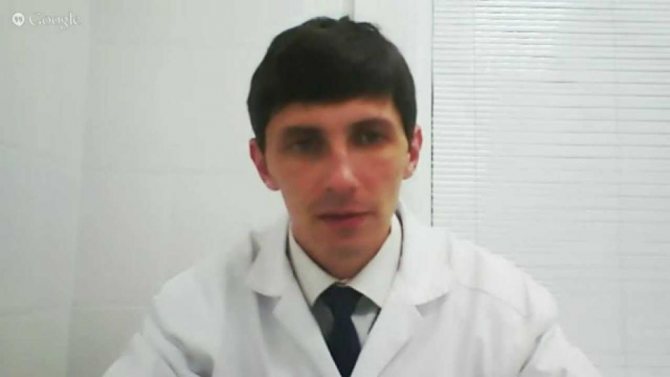
Not all district hospitals and clinics have a test kit for testing for CV CM. Such diagnostic equipment is available only in cardiology departments. Therefore, it is better to hospitalize a patient with suspected myocardial infarction to a hospital specializing in the treatment of heart disease.
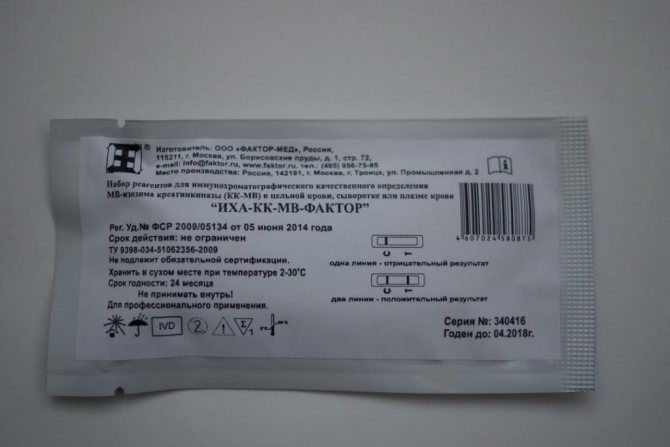
Patients also respond positively to the cardiac-specific enzyme blood test. This study helped them identify myocarditis at the initial stage, undergo treatment on time and avoid serious complications. After all, cardiac pathologies very quickly move into the decompensated stage. Carrying out a blood test for CV CK helps prevent irreversible changes in the heart muscle.

